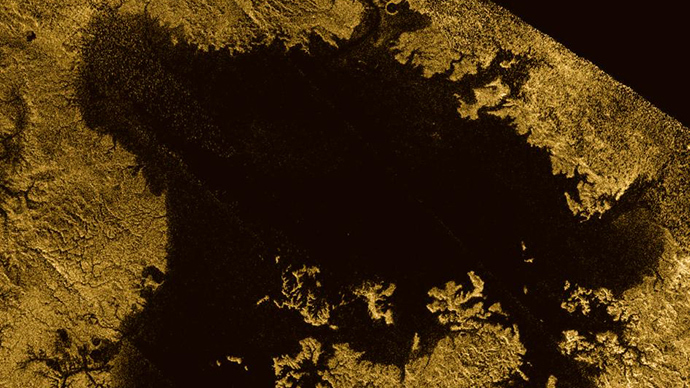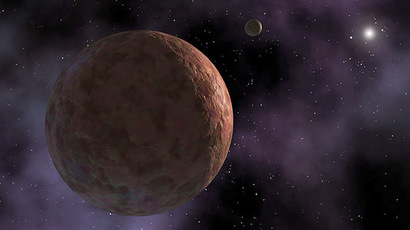‘Mystery island’ on Saturn moon’s methane sea puzzles scientists

A strange object, dubbed a “mystery island,” has appeared briefly on images of a methane sea on Saturn’s largest moon, Titan. Studying the images, taken by the spacecraft Cassini, astronomers came up with four possible explanations.
The unusual discovery was made on Ligeia Mare, the second-largest of Titan’s three bodies of liquid big enough to be considered seas. A bright white object was spotted off the rocky southern coast of the sea when Cassini flew by it on July 10, 2013. Neither earlier pictures taken by the spacecraft’s radar nor the one taken on July 26 have the object, which means the scientists spotted a big transient process on the usually calm body.
“This discovery tells us that the liquids in Titan's northern hemisphere are not simply stagnant and unchanging, but rather that changes do occur,” said Jason Hofgartner, lead author of a paper describing the discovery, which was published on Sunday in Nature Geoscience magazine.
Earlier studies of Ligeia Mare based on Cassini images showed that the surface of the sea, which consists of methane and ethane, is remarkably flat within several millimeters. One of the possible explanations of what the “mysterious island” could have been implies that this may be changing.

Titan has seasons just like Earth does, and is currently transitioning from the vernal equinox, which happened in August 2009, to summer solstice that will be in full swing in May 2017. The northern hemisphere of the moon is heating up, and this energy could be causing waves, one of which could have been shot by Cassini, authors of the study speculate. If true, this would be the first image of waves taken on Titan.
Other possible explanations are that the object was actually bubbles bursting from the seabed, a methane iceberg that formed during winter and remained submerged until the liquid became warmer, or some suspended solids akin to slit on earth that formed an actual island that was washed away later.
Among Saturn’s 62 moons Titan is the largest and arguably most interesting scientifically. It’s the only moon in the Solar system that has its own dense atmosphere consisting of methane and nitrogen. It’s also the only one proven to have surface liquids, although at temperatures on the surface around -180 degrees Celsius, those liquids are hydrocarbons that are in gas phase in earth conditions.
NASA considered sending a floating robot to Titan to study its environment up and close, but eventually opted for a Mars mission. An alternative mission would involve a balloon mapping Titan’s surface.














